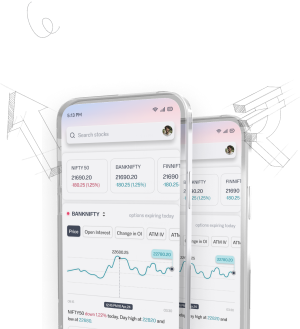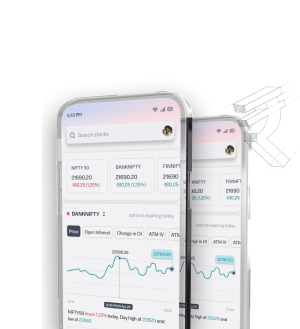Volume Spread Analysis: Richard Wyckoff's Method for Market Assessment
Understanding change with respect to price would enable one to learn Volume Spread Analysis, a good one of the powerful tools enabling volumes and price interactions which form the major players within that market, or known better as the "Composite Operator." Learning VSA will alter your idea of how to choose positions to trade in. In this article, we shall look at some of Wyckoff's ideas and how to use them. We will look into how it can help us become better traders by searching for winning trades.
Key Points
Among such significant points, one comes from Volume Spread Analysis devised by Richard Wyckoff. Watching volume and price together helps know what large investors are doing.
- The Wyckoff method has been critical in the analysis of markets since the early 1900s. Knowing the term trading like springs and upthrusts, this gives us better decisions. It can also use the Wyckoff market cycle for better trade planning.
Ideas from early experts like Richard Wyckoff still apply to today's trading.
Understanding Volume Spread Analysis
VSA is one of the chief instruments a trader can have; it is the variation of volume in comparison with price changes. In simpler terms, from volume and price, we realize how the market responds so we know whether prices are going up or down. It reveals whether buying or selling drives the market. Richard Wyckoff was the first one to come up with VSA. It uses three trading rules: Supply and Demand, Cause and Effect, and Effort vs. Result. Understanding these rules helps us see market trends. VSA tells us that volume is significant because large institutions can affect the market more than individual traders. We often use candlestick charts for VSA. These charts display the difference between opening and closing prices. They also show the highest and lowest prices of the day. Colors indicate if the market is going up (green) or down (red).
| Candle Type | Description |
|---|---|
| Bullish (Green) | The closing price is higher than the opening price, therefore there was buying pressure. |
| Bearish (Red) | The closing price is lower than the opening one, hence put pressure on selling. |
Looking at volume helps one to see how prices are changing. A significant volume often means a breakout may happen. Trends move between accumulation and distribution, showing tests of supply and demand. To utilize VSA, a substantial number of people have been making a lot of money. They followed patterns and that made them earn huge profits.
Richard Wyckoff: The Father of Technical Market Analysis—or—The Father
Richard Wyckoff was a market analyst indeed, and he introduced some truly revolutionary changes into our trading. By virtue of collaboration with legends like Charles Dow and Jesse Livermore and applying completely new ideas on analyzing markets, he modified and created new ways of trading and making such basic trading decisions as what to buy or sell. End.
He derived the Wyckoff Method, which analyzes price changes related to volume and determines how the market is behaving.
Wyckoff studied the flow of 'Smart Money.' This is one of the primary trading issues that exists today.
He said that volume is the measure to understand the markets. His ideas provide us with a complete view of trading. They help us understand the market conditions.
The Wyckoff Market Cycle Explained The Wyckoff market cycle is essential for understanding how the market changes with time. The cycle presents itself in four major phases: Accumulation, Markup, Distribution, and Markdown. This helps us guess price changes and plan our trades.
In Accumulation Phase, large buyers purchase the stock thinking the stock will continue to remain good in the future, which usually causes price increases. Then, in the Markup Phase, when there are more buyers, it pushes prices up. Then comes the Distribution phase. Here, large investors begin selling because they do not know what the future holds for the stock. This tends to drive prices down and start the Markdown phase. During this phase, more sellers lower prices, making traders rethink their decisions.
| Phase | Description | Market Sentiment | Investor Actions |
|---|---|---|---|
| Accumulation | Phase of heavy buying by institutional investors. | Optimistic | Buying |
| Markup | Price rises due to increased demand. | Bullish | Holding, buying |
| Disbursement | Institutions start distribution, hawkish beginning to sell | Bearish | Someone short sells |
| Markdown | Prices fall because supply is too high. | Bearish | Someone short sells |
Knowing the Wyckoff market cycle is important in determining huge trading tendencies. He helps us understand the price changes occurring in each phase. This knowledge helps create better trading plans and respond to market changes. Wyckoff Market Cycle has Four Stages The Wyckoff market cycle has four stages. They all represent varied phases of how sensitive the market feels and how people trade there.
Accumulation Phase
Big investors start buying slowly in the accumulation stage, once the prices have dropped. Prices start going for consolidation during this phase, and the trade volumes will likely increase. That is strong proof of great interest in buying that has yet to happen. Knowing these signs will help us identify good times to buy.
Markup Phase
Markup phase In the markup stage, prices tend to rise very fast with accumulation if there are more buyers than sellers. It is when a new uptrend starts showing up through higher highs and higher lows in prices, indicating that the market is moving upwards. Since the market is bullish, this may be a good trade point.
Distribution Stage
This phase follows the markup. In this stage, smart investors sell to ordinary traders. Prices hardly fluctuate, suggesting a change in market direction. Knowing this phase gives us a chance to amend our trading plans.
Markdown Cycle
This implies that prices drop very quickly during the markdown phase where the commodity drops after its distribution and when more individuals sell. It is indeed very crucial when to sell or look for shorting opportunities.
| Phase | Description | Key Characteristics |
|---|---|---|
| Accumulation | Institutional buying within a downtrend. | Price tends to be range-bound, volume picks up, tells off. |
| Markdown | Sharp price increases as demand outstrips supply. | Higher highs and higher lows, bullish momentum. |
| Distribute | Smart money is selling shares to the less experienced. | Low volatility, lower highs, signals shift in behavior. |
| Markdown | Prices decline as selling pressure prevails. | Significant downward momentum, preparation for exits. |
Application of Wyckoff Method in trading
Adapting to Wyckoff ways changes everything we know about trading. It starts with a close look at the market for trends. And this helps us to choose stocks that fit into those trends. The fact of knowing if a stock is being bought or sold only gives us insight into whether we should buy or sell. Knowing the three main rules of trading helps improve our strategy. Observing the market phases allows us to predict where prices might head. Buying interest suggests that prices could rise, while selling indicates they might fall. This knowledge will help us to make things clearer on our trades' objectives. We use stop loss to deal with the risk. This saves our money as we can face the ups and downs in the market. Our trades can be improved by looking into price patterns and places with high chances of success.
The table below displays crucial concepts from the Wyckoff method which emphasizes how it is used in trading:
| Concept | Description |
|---|---|
| Fundamental Laws | Three basic laws governing market behavior and trading activities. |
| Market Phases | The collection, diffusion stages, and the implication for pricing strategies. |
| Price Structures | Five clear stages to determine our buying/selling actions. |
| Trading Ranges | Critical areas that determine entrance or exit timing. |
| The Composite Man | A concept focusing on market manipulation and strategic planning of stock movements. |
We learned the Wyckoff method of trading and thus understood the thoughts of experts like Ruben Villahermosa, who shared his thoughts on price and volume. This improved our trading, keeping our plan strong and prepared for any market change.
Volume Spread Analysis Approach
Finally, VSA can be very useful in making us better traders. It shows how volume and price work together to understand the market.
Understanding Volume Patterns
Volume patterns in VSA tell us the points at which there is much buying or selling. For instance, if prices rise significantly after falling considerably, it may indicate a lot of buying is occurring, suggesting a rising market. Checking these patterns thus aids in making good trading decisions. Price Action and Volume Relationship Watching price changes and volume together is very helpful. If volume moves higher while prices rise, it shows that people legitimately support the price. But if volume dries up when prices rise, it could indicate that the market is about to change direction.
Help in forming better trading plans and reducing the risks. Significance of Value Spread Analysis in Trading
VSA is very important in trading. It helps understand what goes on behind the scene in the market. It helps the trader appreciate the mood of the market better while checking on volume and price together; it's key in noticing trend changes and new opportunity spotting.
The volume analysis cited can be used in trading actions. Understanding the volume patterns better enables us to elevate our success rate in diverse markets. It tells us when to buy or sell, keeping us in a good trading position.
For example, check the Positive Volume Index (PVI) and the Negative Volume Index (NVI). These tools, developed in the 1930s, are important in studying volume. It is a strong signal when markets are rising and volume also rises. Including these indicators in our trading plans helps us better notice market trends. Volume spread analysis can predict market jumps. We can make smarter choices with the value of VSA, having this data leading to more victorious trades.
Benefit of Utilizing the Wyckoff Method The Wyckoff Method in trading has numerous advantages. Understanding them will improve our trading plans. It will help to understand more clearly the market signals.
Finding Market Turning Points
The Wyckoff Method helps find the timing at which the market is likely to shift direction. It observes price and volume to estimate big price changes that lead us to wise trading decisions while raising our profits and reducing risks. ### Understanding Market Psychology Understanding of market psychology is an integral part of the success of trading operations. It indicates how big investors and market emotions influence the market. This understanding helps us to time better and grasp market changes.
| Benefit | Description |
|---|---|
| Identify Market Turning Points | Framework for prediction of significant price changes through price and volume studies. |
| Understanding Market Psychology | Knowing how investors think and feel can help us understand market changes. |
| Risk Management | Improved risk management comes from more accurately informed judgment. |
| Better Ways of Trading | Advanced techniques help us trade better. |
Problems in learning the Wyckoff method The Wyckoff method utilizes technical analysis to analyze market action. However, it has dilemmas. Understanding how price and volume work together is quite problematic, and learning it requires time and effort.
Learning market psychology is hard. A person can learn the Wyckoff method, but it is not easy to apply all that knowledge to understand the price change in a market cycle. The Wyckoff method is one of the hardest to learn.
We can make learning easier by taking it a little slower. Here are some helpful tips:
-
Try to work with the actual data live for better market exposure.
-
Books, online courses, and seminars were used for self-learning. – Engage in traders' groups to share advice and experience.
-
Analyze illustrations of individual case studies of how technical analysis applies the Wyckoff Method.
Getting through these challenges is critical. It makes us effective traders. It helps us successfully apply the concepts of the Wyckoff Method.
| Replicate | ||
|---|---|---|
| Price-Volume Relationships | Price-volume relationships can be very challenging to understand. | This can come alive using actual market data. |
| Market Psychology | Recognizing emotional factors affecting traders adds to the difficulty. | Study psychological principles behind market moves. |
| Discipline and Patience | Maintaining a structured approach challenges many learners. | Set realistic goals and practice regularly. |
| Going from theory to real-world trading can be tough. | Begin with simulated trading before trading with real money. |
FAQ
What is Volume Spread Analysis (VSA)?
Volume Spread Analysis is a trading system designed by Richard Wyckoff. It delves into how changes in volume and price interrelate to project future market changes. In simple terms, it helps traders understand the reason a price change occurred.
How does the Wyckoff Market Cycle proceed?
The Wyckoff Market Cycle has four stages: accumulation, markup, distribution, and markdown. Each stage shows different ways the market behaves. They help us predict where prices might move next.
What are the advantages of trading with the Wyckoff Method?
The Wyckoff Method helps us see when the market changes and why it happens. It enhances trading by looking at price and volume's behavior with each other.
What are the strategies that we can apply with Volume Spread Analysis?
We can apply methods such as noticing big changes in volume to find out where buyers or sellers are strong. We can also watch how price and volume move together to understand market trends.
Are there difficulties in learning Volume Spread Analysis and the Wyckoff Method?
Yes, learning it requires self-control and a lot of practice to become much better in taking note of price and volume connections. It can also be hard for newbies to grasp market psychology.
How can one use VSA to improve the result of trading?
It will help us see buying or selling patterns correctly or to check the market trends using the volume spread analysis. This can improve our trading insights and lead to better results.
Disclaimer
The content provided is for educational purposes only and does not constitute financial advice. For full details, refer to the disclaimer document.




